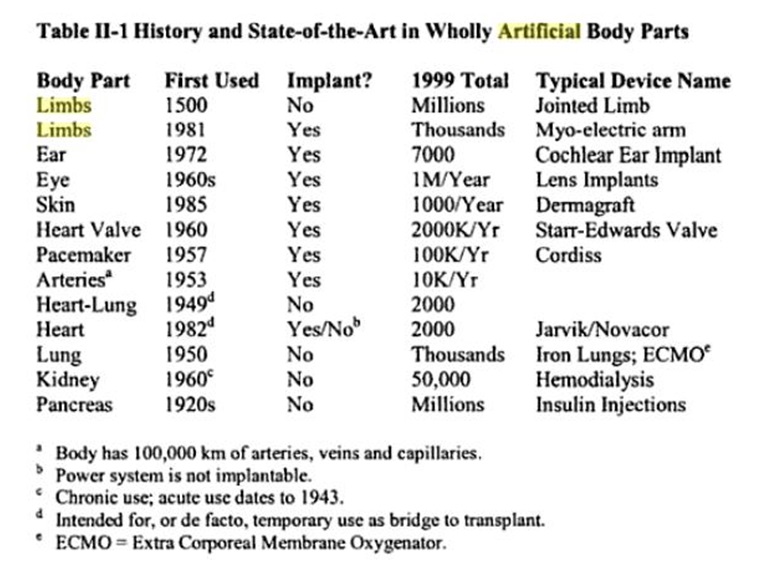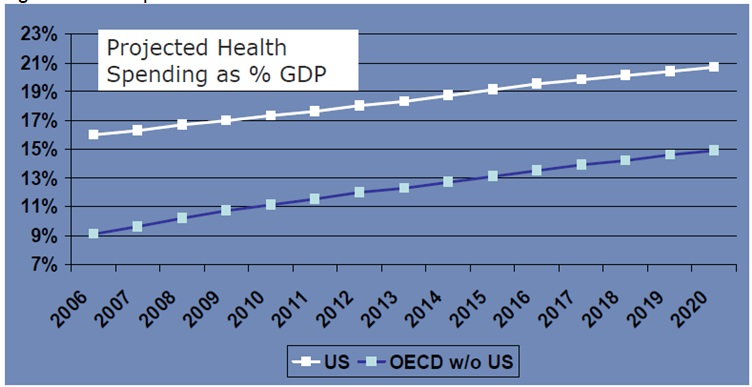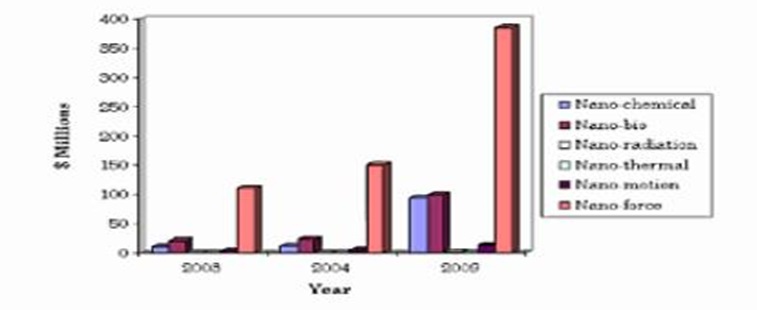Introduction
It is reported that in 1963, the renowned geneticist Joshua Lederberg, made a prediction that as medicine progressed it would be faced with increased economic pressure on transplant sources (Boyd 2003). This prediction has become more than true since the current altruistic approach to organ donation has failed to meet the demand for organs for over thirty years. These failures can be attributed to poor procurement methods, moral and legal inhibitions, thousands of people continue to lose their lives annually (Boyd 2003).
This continued loss of life has led to the consideration of alternative means of acquiring these essential organs. It is becoming more and more likely with each passing day that the solution will emanate from advances in medicine and human ingenuity to develop these vital life-saving organ solutions (Boyd 2003). This technologically driven initiative has led to the emergence of various social and individual rights issues and the consideration to form a market for human organs.
Although these artificial limbs and organs can not promise to restore the recipient to normal activity, the replacement of limbs and organs may someday be as common as eyeglasses (Sletto 1996). Already hip joint replacements have enabled recipients to participate in sports like golf; hearing aids are widely used allowing users to participate in regular conversations while artificial hearts and kidneys keep many alive while awaiting organ transplants (Sletto 1996). In this report, the data presented is concerned primarily with artificial limbs and organs to indicate their future and possible effects on humanity. Further, it will provide some information on current trends in medical research for a lasting solution.
Background
The use of artificial limbs and organs is not new and the first artificial limb is reported to have been used as far back as 300 B.C. (Sletto 1996). The copper and wooden limb were discovered in 1858 in Capri, Italy. There is also a hand of iron commonly known as Alt Rubian that was used by knights in the 15th century (Sletto 1996). (See Fig. 1)

However, the modern bionics we seek to discuss in this report has little to do with these rudimentary prosthetic devices. This is because due to numerous advances in surgical technology, increased availability of alternative materials and innovations in engineering modern artificial organs or limbs are almost lifelike (Sletto 1996). To illustrate this we will consider the modern artificial lens made from polymethylmethacrylate that has led to a 75% reduction among people affected by cataracts (Sletto 1996). The cataract infection characterized by the clouding of the lens and impairment of sight is today easily treated through this approach.
In addition to this research into space-age materials such as cobalt chrome alloys, titanium, plastics such as Teflon, nylon and silicon all have resulted in reduced chances of rejection as well as increased durability, the flexibility of artificial organs and limbs (Sletto 1996). The computer age has also made major improvements in the design, fitting and modeling of prosthetics and artificial organs. These innovations have led to a myoelectric prosthesis which can easily be mistaken for an actual arm or leg. It is advances such as these and their potential that we seek to discuss in this report.
Objectives of the Study
In this section of the report, the discussion will shift focus to the dilemma facing both practitioners and patients within the medical services industry. It is reported that as of January 2003, the number of people waiting for an organ donation reached 80,000. It has been estimated that there is a name added to these waiting lists every thirteen minutes (Boyd 2003). Due to these long queues and the role of these organs in life a further 12 American citizens die on a daily basis waiting for a vital organ. The situation is particularly troubling because the medical technology that can avert unnecessary deaths exists and is rapidly advancing (Boyd 2003).
There is a general consensus among the organ transplant community that the shortage of organs is a major concern and can be considered the greatest obstacle to saving lives via organ transplants (Boyd 2003). The donation of an organ while healthy or even after death is also a complex choice for many who pose religious, medical and financial questions.
Further complexities in the matter of organs and transplants are due to the position of the law on property and a body. The general idea of whether the body is property has been subject to debate for years. The legal tussles that have been in and out of courtrooms still do not allow the harvest of organs without consent (Boyd 2003). In addition to the legal restrictions preventing the sale and procurement of organs the issue of providing a financial incentive for acquiring organs is considered illegal. Due to these limitations, it would appear that the best solution lies in the development of artificial organs and limbs. In the next section, the discussion will analyze some of the technological solutions that exist in solving the problem with defective body parts.
Discussion
It has already been established that the exchange of organs between the living and dead is not adequate to meet the demand of the millions of organs per year needs in the US and other parts of the world (Rothblatt 2004). Among the solutions that were selected for discussion in this section is the artificial heart. This innovation has been selected owing to the fact that in the west death from heart disease is more prevalent than from any other cause (Rothblatt 2004). It should be noted that even with the significant steps that have been taken in research to provide effective solutions for heart disorders there is as yet no device available that can completely replace the heart.
This should not be taken to suggest poor performance because on the contrary there are a number of immensely successful implants that deal with specific heart disorders. These come in the form of heart valves, cardiac pacemakers and defibrillators which have been used to give dead and dying patients new life (Rothblatt 2004). For this reason, they are considered the equivalent of an artificial heart for these patients. Though these devices have had a significant impact on heart problems it does not make a significant impact on the organ shortage situation. As a result, there has been increased research to identify completely implantable organs in the future (Rothblatt 2004).
In light of this dilemma, it has been suggested bioartificial organ technology may arise as a possible solution to the organ transplant dilemma. These procedures involve the use or transplant of organs, tissues and cells from animals to people without giving rise to rejection based on natural immune response (Rothblatt 2004). Efforts to provide solutions in Bioartificial technology can be traced to efforts in 1957 by Thomas Ming Swi Chang (Rothblatt 2004). His work involved efforts to encapsulate the foreign bodies in an artificial membrane that prevents rejection due to attacks on the host immune system. The concept was popularly known as ‘immuno-isolation’. These approaches are also unlikely to offer a long-term solution to the organ shortage except in the case of the pancreas. There are also efforts being made to use this technology in the replacement of transplanted brain tissue, thyroid glands and other specialized cells (Rothblatt 2004).
In the treatment of a Liver disorder, the use of a pig liver or ultra-high-tech polymer housed within a machine has been effectively used to perform the normal blood purification functions of the liver (Rothblatt 2004). The reports on this technology indicate that this approach is effective enough to allow the liver to regenerate and allow the patients to resume a healthy normal life (Rothblatt 2004). The artificial membrane acts as a barrier to prevent ingress by immune cells that would destroy the artificial liver. In clinical tests, human patients have been sustained by the artificial liver long enough to receive a transplant and continue to live normal lives. This innovation is especially useful for liver disorders where the organ is not cirrhotic, as the organ possesses the capacity to regenerate.
Several devices have been designed to restore normalcy to the lives of patients with various disorders. For example, after surgery for colon cancer some patients have reported difficulty in controlling defecation due to stoma. This problem quite understandably seriously affects the quality of life and would benefit significantly from a permanent solution. However, with the invention of a completely implantable device known as the artificial sphincter many patients are now able to control defecation (Yamaguchi 2009). With this implanted device and an external control panel, the patient can control the defecation process and improve the quality of their lives.
Another innovation that this report will mention is the artificial esophagus. It has been reported that over 10,000 people die annually in Japan due to cancer of the esophagus (Yamaguchi 2009). In practice operations on the esophagus are often difficult since its reconstruction is very difficult. The esophagus is crucial because it allows food to move through the digestive system through muscular contractions.
Among the most popular implants that have for long assisted many individuals with dental problems. Among the approaches that have been used in corrective dental practice include the use of materials such as titanium to solve a variety of dental issues (Mozafari 2007). The implants are useful in filling the crowns of teeth to allow the patient continued use of a tooth that would otherwise be rendered useless owing to infection or physical damage to the crown.
Catheters are implants that are either of a temporary or permanent nature that are useful in maintaining the use and control of the urinary tract. These devices are fairly simple and are inserted into the urethra to maintain the normal flow of urine. They are typically constructed from PVC, Teflon, etc. (Mozafari 2007)
Orthopedic implants are the most widely used and researched medical devices. The implants are especially delicate given that these implants are prone to the highest likelihood of rejection and removal due to their large dimensions (Mozafari 2007). It is reported that infection occurs in 33% of the surgery and for such reasons much research has gone into the improvement of these devices. Used in
The last of the artificial devices that the discussion will mention are lenses that are commonly used in the adjustment of ocular disorders such as cataracts. Due to improvements in medical research the problems of cataract patients. The disease clouds the lens and can cause blindness (Sletto 1996). Through a brief surgical operation, the damage can now be reduced by implanting an artificial lens (Mozafari 2007).
Methodology
For this study, the researcher opted to perform a literature review to gather existing data on the topic.
Results / Predictions
Following a review of literature on the subject of organ donation, it has been established that there is a major shortage of organs within the United States. Based on statistics it has been observed that in 2003 84,000 people were waiting for an organ in the US. By 2006 the number had risen to 94600 on the waiting list in the US (Shibles & Maier 2010). With such high numbers on the waiting lists, the death toll is equally high with as many as 17 daily due to a lack of organ donations (Shibles & Maier 2010).
Projected Expenditure in the US on Healthcare
Upon completing a review of literature on the topic in question it has been established that the issue of artificial organs is bound to get more serious in the future. This can be concluded on observation of the statistics that indicate the percentage of expenditure on health care is bound to rise in the future (Wilkinson 2009). The main reason behind this increase in health care expenditure comes from the fact that the number of people aged above 60 is bound to continue rising based on projections reaching 2020 (Wilkinson 2009). It has further been observed that this age group is the most susceptible to the demand/supply changes in organ access (Figure 2).

In addition to increased expenditure on health care in the future, it has been observed that there has been an increase in nanotechnology-based approaches for health care (Figure 3).

As it can be observed in the above diagram the amount being spent on nanotechnology is increasing thus suggesting the increased use of this approach in response to health care needs. These nanotechnology applications are already underway in the field of healthcare and offer tremendous promise (Allhoff, Lin & Moore 2010). It is expected that the expenditure will increase and reach $ 53 billion by 2011 and exceed $ 100 billion by the year 2016 (Allhoff, Lin & Moore 2010). Nanomedicine as this approach is commonly referred to, involves the use of artificial materials and microdevices to enhance body performance. In the case of organs, nanotechnology can be used to act as a remedy for harmful conditions that acted as a prompt for replacement (Allhoff, Lin & Moore 2010). Nanomedicine, xenotransplantation is among the common approaches that have been established to combat the issue of organ shortages. Though these are not the only approaches due to brevity the researcher will conclude the discussion on the approaches with that data.
Conclusion
In the course of the discussion in this paper, it has been noted that the use of artificial organs and implants is not new to humanity. Several body parts are prone to diseases and often need to be replaced with organs from donors. However, the number of organs donated on an annual basis is far below the number required to meet the current demands.
In response to this, there have been several efforts to provide viable alternatives. Among these is the use of organs from other animal species to replace damaged human organs. One issue that is especially difficult concerning animal organs is the rejection by the host. In line with this, it has been suggested that the organs are coated in an artificial membrane that acts as a barrier between the host immune cells and the organ.
Another alternative has been the use of various machines that have been designed to imitate the actions of the body organ in question. These machines have been reasonably successful in the case of specific organs such as the kidney. Dialysis machines have been effective in maintaining the health of kidney patients all over the world. In addition to this, there is the use of a technology known as nanomedicine that promises a bright future for individuals in need of organs. However, as yet no single approach has proven effective for all organ needs.
Based on the above facts observed in the literature review it is clear to see that there is a need to address the issue of organ replacement and consider policies that can avoid serious problems in the future. This conclusion can be reached since the population in need of similar services is projected to increase in the future.
References
Allhoff, F., Lin, P., & Moore, D. (2010). What is nanotechnology and why does it matter? From science to ethics. West Sussex: John Wiley and Sons Ltd.
Boyd, S. G. (2003). Considering a Market in Human Organs. North Carolina Journal of Law & Technology, 4(2), 417-474.
Mozafari, M. R. (2007). Nanomaterials and Nanosystems for Biomedical Applications. Springer. Dorcrecht.
Rothblatt, M. (2004). Your life or mine: how geoethics can resolve the conflict between public and private interests in xenotransplantation. Ashgate Publishing Company: Burlington.
Shibles, W. A. & Maier, B. (2010). The Philosophy and Practice of Medicine and Bioethics: A Naturalistic-Humanistic Approach. New York: Springer Science + Business Media.
Sletto, B. (1996). High-tech body parts. The Rotarian, 168(6), 20-23.
Wilkinson, J. (2009). An Introduction to the Medical technology Industry. Eucomed Medical Technology, 1-49.
Yamaguchi, T. (2009). Nano-bio Medical Engineering 2009: proceedings of the Tohoku University Global Center of Excellence Programme. Imperial College Press: London.